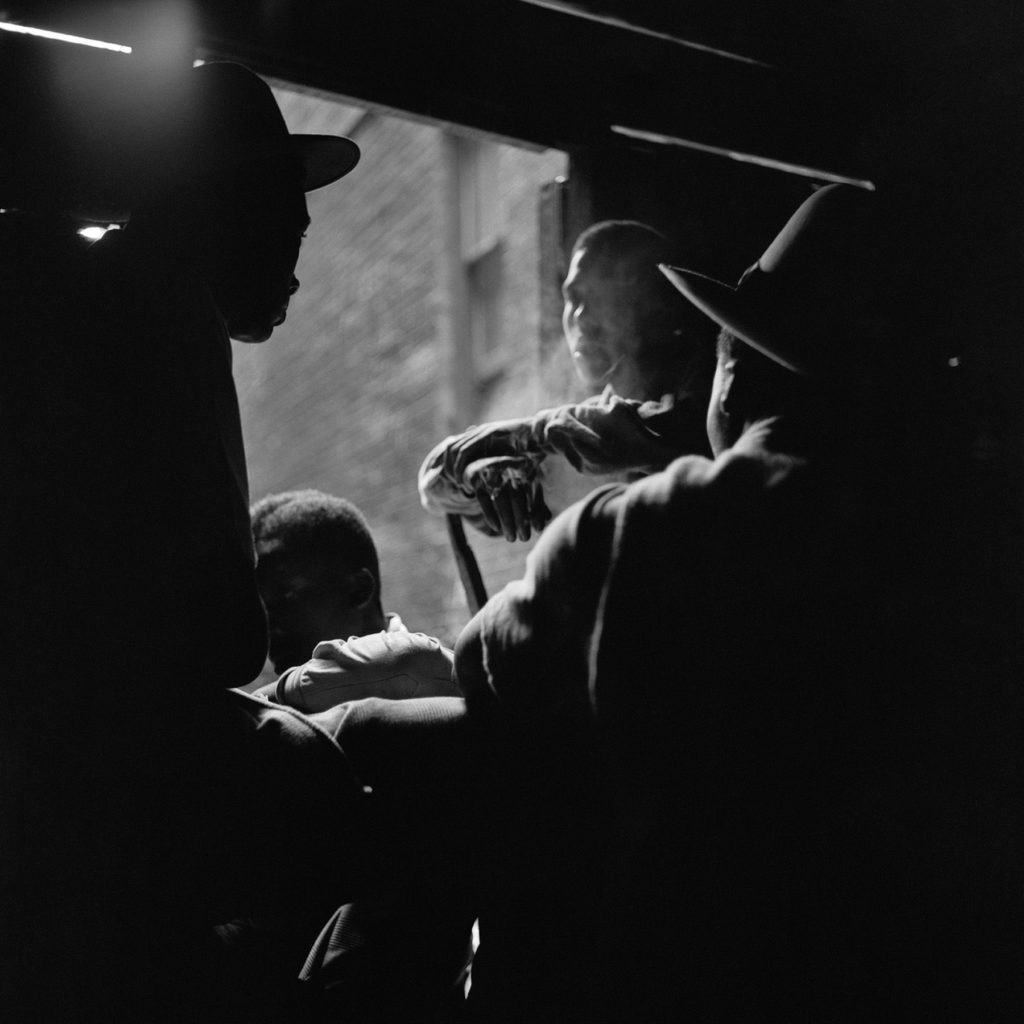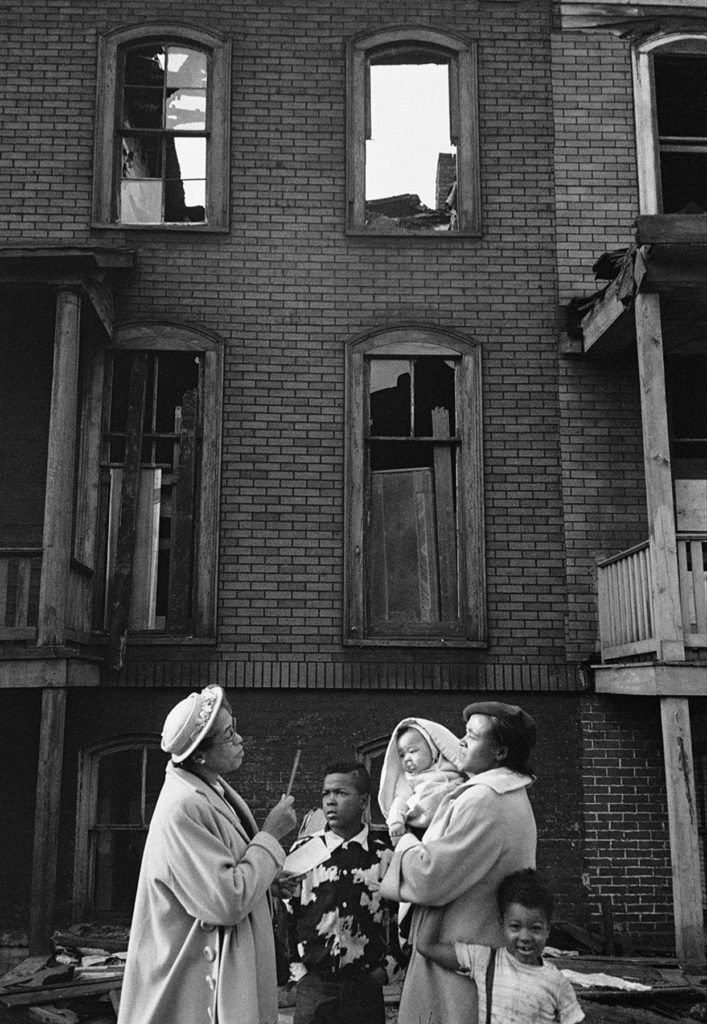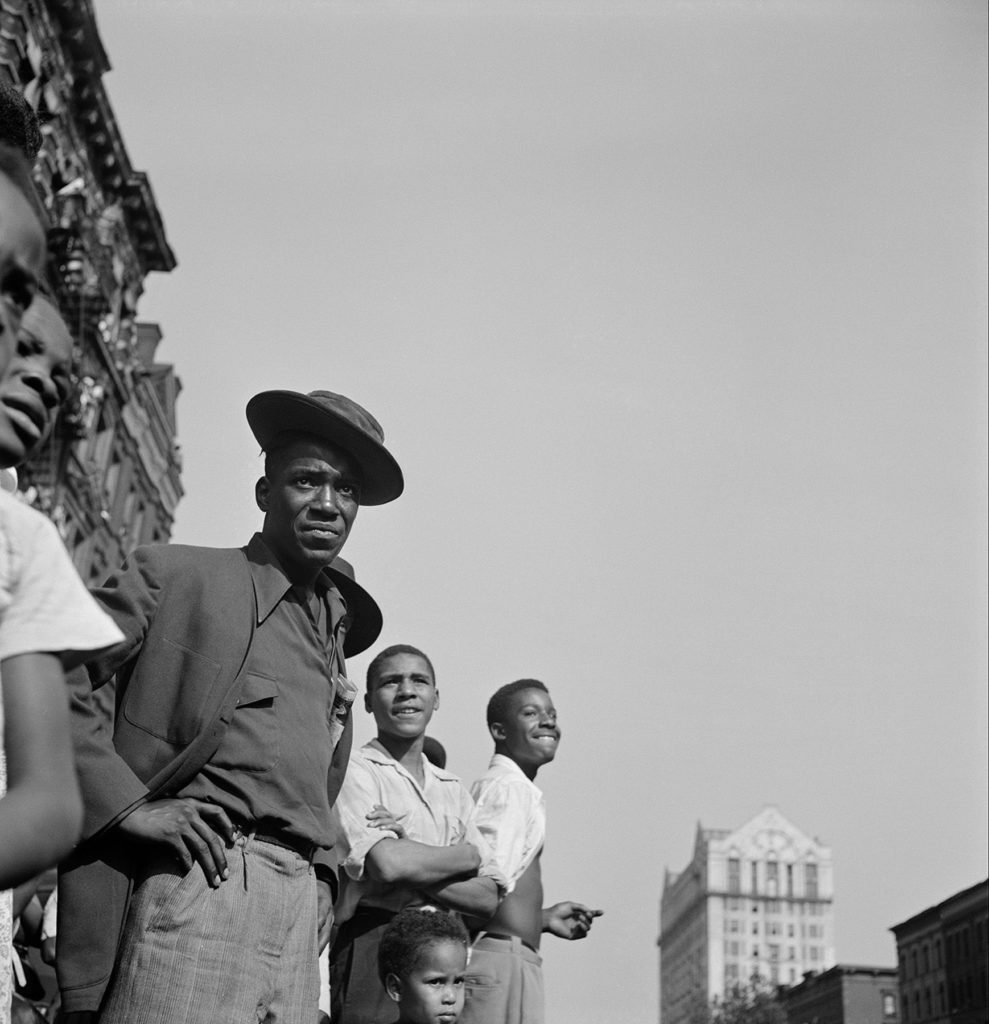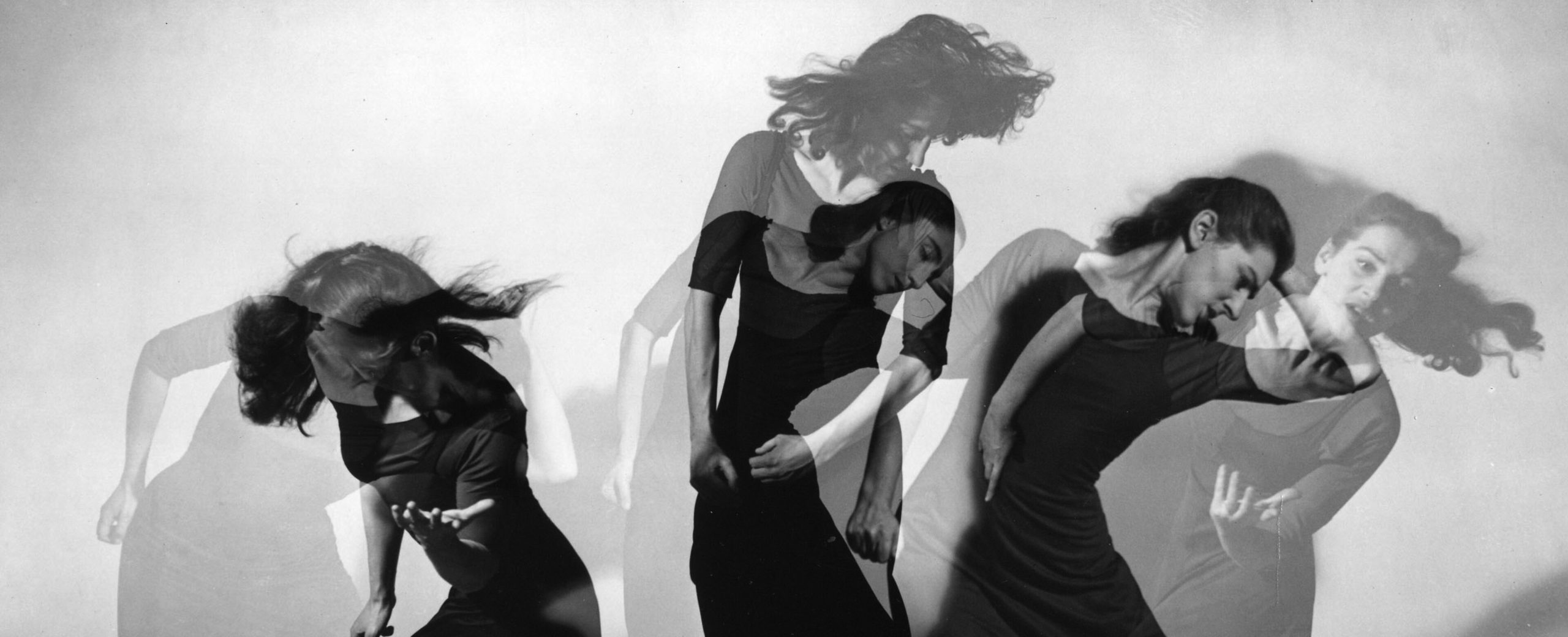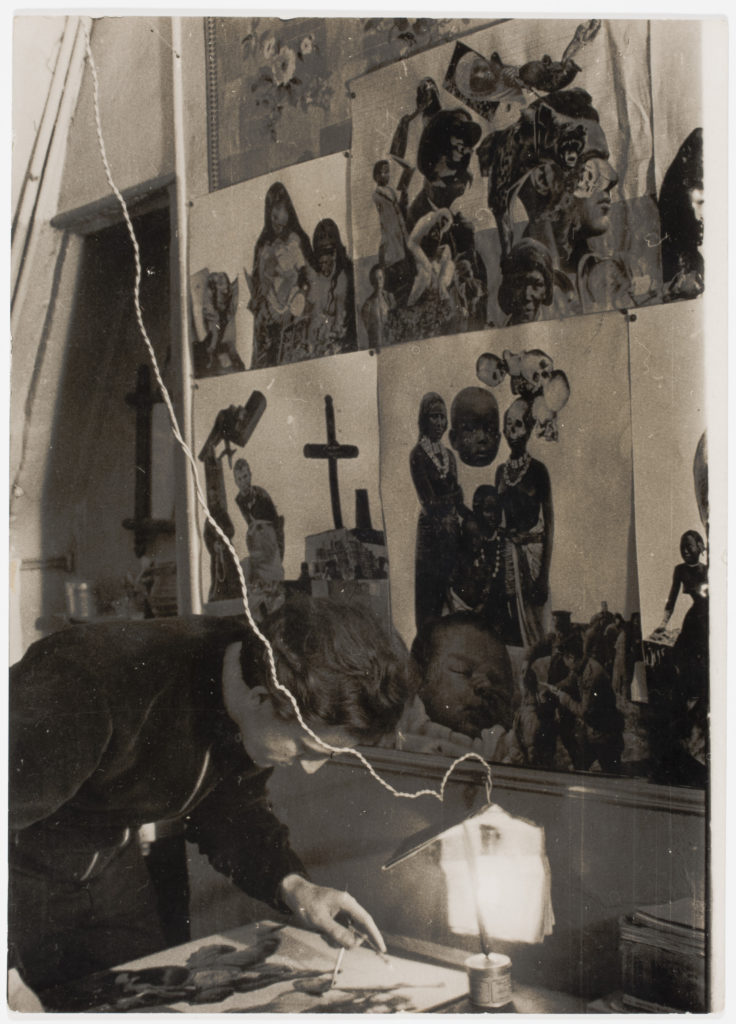By John A. Bennette
It would be irresponsible for me to name what I think is or will be hot in 2007. I want anyone who reads this to go out to the many galleries and look, find and discover the joy of seeing for yourself. Pick up a book, talk to your friends, meet and support an artist in your town—set your own trend. Vincent Libretti once said, “I don’t own the future, I just let it come.” Vincent was on to a good thing—the future is better in hindsight. I feel that the most remarkable aspect of 2007 will be the fulfillment of the past’s future—most of the predictions of 15 years ago are now being accepted as part of today’s photographic world. Some of these are scale, color and new technologies. To help me resolve this enigma of trends, I asked three questions of a few people each representing a different level of the photographic art world: gallery owners Bill Hunt, Yancy Richardson, Andrea Meislin and Michael Mazzeo and several artists.
The Three Questions
What are the trends in photography that you see? What directions are you taking to meet changes? For Bill, Yancy, Andrea and Michael the third question was: Which artists will you be showing in 2007/08 and will their exhibition reflect the trends? For the artists, the third question was: Which artists from your generation do you admire?
Bill Hunt – Hasted Hunt Gallery
1. People love new toys: home printers and Photoshop. But I am always knocked out how nothing is ever really new. I am not interested in trends, but ambitious to be ahead of the curve. The general level of photography talent is very high, but again I am more interested in what is extraordinary. Unfortunately, I don’t see any trends towards greatness. I think there may be less emphasis on separation within photography, that is, fashion, photojournalism, fine art—talent is talent. If this is a trend it is a good one.
2. Education. Listening. Patience. Guessing. Looking. Also we will phase out prints with face mounted Plexiglas and return to conventional framing.
3. We have two artists, which demonstrate two different things. Jean-Paul Goude created works in the ’70s that made it possible for artists at the turn of this century to make staged, Photoshopped work. Of course, he did it with an X-Acto blade and paste. Nothing is new. Everything old is new again. Andreas Gefeller has taken contemporary technology and used it to see something that doesn’t exist. He is the first contemporary photo-based artist whom I have encountered to see something that could not be seen before.
Yancy Richardson – Yancy Richardson Gallery
1. The biggest trend I see is the disappearance of black-and-white photography. Of all the new work I look at, I see very little good new work being produced in black-and-white. In addition, there is a continuing push towards larger and larger-sized prints made feasible by technology and the buoyancy of the art market. Finally, there is a great deal of interest in work from the ’60s and ’70s.
2. I cannot do anything about the lack of interesting work in black-and-white, as it seems fewer artists are choosing to work that way. I just look for the best work I can find, regardless of the medium. As for scale, I am renting more storage space!
3. Our upcoming exhibitions include Don Donaghy, a long-forgotten New York school photographer who made work in the ’60s in black-and-white. In 2005 we did two shows of the ’60s photographs by Ed Ruscha. This December we will be showing the work of Andrew Moore, whose breathtaking photographs made in Russia, Sweden and the American West will be printed as large as 70 x 90”.
Andrea Meislin – Andrea Meislin Gallery
1. The gallery has been open for just over 2-1/2 years, so I may not be the right person to talk about trends. What I have noticed recently is that some collectors who are new to the gallery are buying photographs for the first time, after collecting contemporary paintings, drawings and sculpture. It is no longer just photography collectors who are interested in photographs. The medium is now another form of contemporary art to collect.
2. We will be adding at least two painters to the gallery’s stable of artists. The gallery will be participating in international contemporary art fairs—not only those devoted exclusively to photography. Most of the photographers we work with produce large-scale color images that are not limited to the earlier expectations of photographs: portable, black-and-white, etc.
3. Our schedule for 2007/2008 is still being worked on. That being said, we hope to do shows for a variety of artists ranging from a photographer who does traditional black-and-white portraits to a very smart older female “naive” painter who has never before shown in Chelsea.
Michael Mazzeo – Peer Gallery
1. Technological advances and global, political affairs will have the greatest effect on trends. Looking ahead, I expect to see more influence from Asian and South American countries as their economies grow and Internet access proliferates. As far as content and style, the ever-present narrative will give way to a more elusive poetry; we will see a greater confluence of Eastern and Western ideologies; social and political issues will be prominently addressed and environmental awareness will continue to be an important topic. I also expect to see more work from older artists. Successful photographers will need to have a good understanding and connection to the art that has come before, as well as an openness and awareness of current issues.
2. I keep an open mind and look for work that moves me on a visceral level.
3. So far, we are showing Jeff Jacobson, a photojournalist and Stan Gaz, a multimedia artist. Jacobson’s recent photographs are reflective, visionary and transcendent in a way that can only come from age and wisdom. Gaz is a prolific artist whose work, inspired by geology, art history and mythology, addresses memory, family, life and death.
These opinions and answers reflect the responses I received from other dealers and curators whom I queried. I feel that the majority of collectors will still “follow their gut,” as Bill Hunt would say. Yet we must understand that what collectors buy will be influenced by what they see and the serendipity of life. The artist’s answers were surprising in that the majority were unaware or unwilling to give in to the idea that there are trends. Most said that focusing on the creative process and their art was all they will be thinking about in 2007. This was a response from the youngest to someone like Lillian Bassman, who has made photographs for over six decades and made accommodation for the continual progression of technology in photography. Not only is she working with new papers, but also she is using, when necessary, new digital techniques. The idea of keeping an open mind about the “New Age of Photography” was also on the mind of another working photographer from the mid-century, Frank Paulin, who was excited about what could be accomplished and things he could improve upon using new systems. Frank spoke to a group of my students recently and I can say this vital 82-year old was enjoying making pictures in the 21st century. I will only be quoting one artist, Doron Gild, but I think he sums up most of what the others had to say. Here are his answers.
1. Our culture lends itself to trends, whether it’s Ryan McGinley, the Yale Girls, or one of the Britney Spears pop star things. People like certain things because they’re hot or fresh. But, at the end of its cycle, it all looks and feels the same and, for that reason, it withers away just in time for the next big thing to come onto the scene. As for photography and art in general, there will always be trends, but the images, paintings and other art forms that are really great will last. They won’t just be trends; they are timeless. They are the tools that shape our culture and history.
2. I’m trying to stay passionate and faithful to what I believe in about photography and the process. It is a very real thing for me. At the same time, I am trying to be realistic about our culture and the digital age, realizing that an evolution is happening around me. I have to adapt to the accessibility to photography. With this revolution . . . no one is necessarily forcing me, or us, to live by it. But we absolutely have to learn about and find ways to be inspired by the bombardment of images and, if need be, apply some new knowledge accumulated through these changes. Basically, I’m doing whatever feels right and moving forward in my own way.
3. Phillip Toledano inspires me with his desire to make beautiful photographs. His generosity and support of others, both artists and the people he works with—behind and in front of the camera—is amazing. He makes people around him want to become better artists, better people. He makes people smile. Phillip makes art because he loves to make art, not to prove anything to anyone. That is rare in a photographer in New York. Simon Johan’s first body of work inspired me to take my .photography to the next level. It gave me a sense of drive that pushed me to put my all into my photographs and make them my own. Even though it’s cliché to say—me. I try to make photographs AS photographs. I try to understand why I am making each individual photograph. I’m not trying to make the photograph fit within a body of work. I want to make something specific. My school of thought is not such that I say, “Okay, I’m working on a show and I’m going to make these 12 pictures.” Then, there’s the show and I’ll just move on afterwards. I like to make photographs where I enjoy my train of thought surrounding the creation of the image. That’s what I admire about Phillip Toledano. He’s currently in the process of completing four bodies of work. Not because they are projects necessarily, but because each of them is something he is passionate about and he wants them to open a dialog with the viewer; to share his passion and vision with the world.
Well, that is what the insiders have to say. What more can I add? I spend a lot of time talking to artists and realize that for them the least concern is trends. The idea of trends feels too much like commercial hype. Appreciation and understanding of their vision by others with the hope of sustaining their creative process is what concerns them most. Everything else is fluid. Is not the need for narrative depth, color and even new larger scale a type of pictorialism? I fell in love (heat) with a photograph recently, the photograph was by Leora Laor, Untitled #154, that was shown this fall at Andrea Meislin Gallery it was 32 x 42”. Except for the fact that it was a photograph it was almost timeless, painterly. I felt as if I were eavesdropping on a beautiful, yet awkward moment, the rush of a voyeur. The predominate mood was quiet longing and detachment filtered through an amber and absinthe-green palette. There were historical and layered suggestive hints, that allusions and my memory reinforced every time I visited. My soul welled with desire, but in the end, it will be a lost love. I wait to see it published somewhere, so I can rip the page out as a souvenir. So what do I feel about trends? Most of them mean nothing to me. Technology is not a trend; the demand for an artist to create is not one either. The struggle between art and life and fashion and what defines them is a constant.
The market place needs and creates trends, one of which I think is Focus magazine and others like it. I think that because of the number of artists that the market place must now face, Focus magazine becomes another tool, like a website to help artists showcase their images. I see that these types of publications will become a multi-purpose directory and a forum for discussions about photography. I see the need and the evolution for this kind of publication . . . I also see that every man woman and child will someday have a camera. Vincent was right—let it come!
John A. Bennette is a well-known New York photography critic and scholar whose passion is collecting and supporting emerging artists. His 1996 AIPAD address on “The Joy of Collecting” brought him to national attention within the photographic community. He is a frequent panelist and lecturer at photographic symposia nationwide. To contact John with any comments or questions, please e-mail him at [email protected]
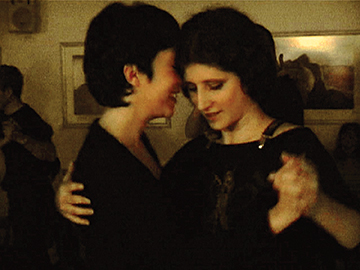
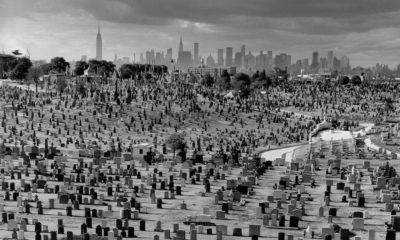
 Photographer Focus1 year ago
Photographer Focus1 year ago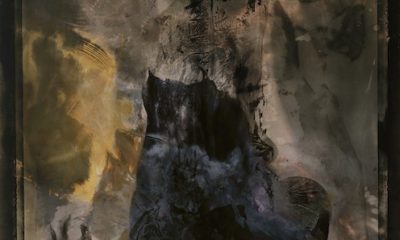
 Collector's Focus1 year ago
Collector's Focus1 year ago
 Collector's Focus1 year ago
Collector's Focus1 year ago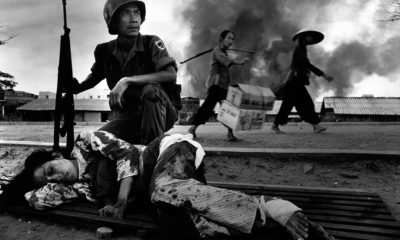
 Collector's Focus1 year ago
Collector's Focus1 year ago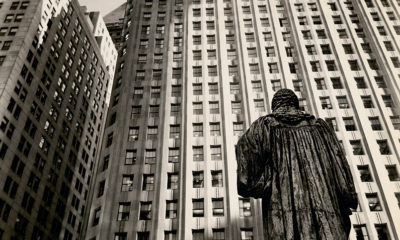
 Vintage Focus1 year ago
Vintage Focus1 year ago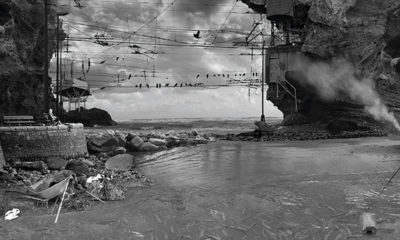
 Collector's Focus1 year ago
Collector's Focus1 year ago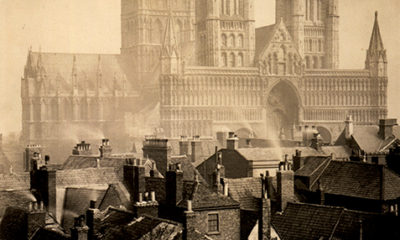
 Vintage Focus2 years ago
Vintage Focus2 years ago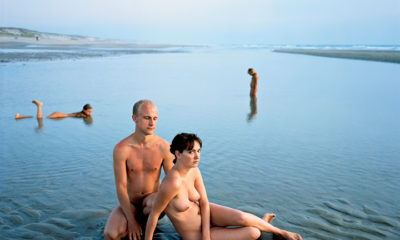
 Photographer Focus1 year ago
Photographer Focus1 year ago






